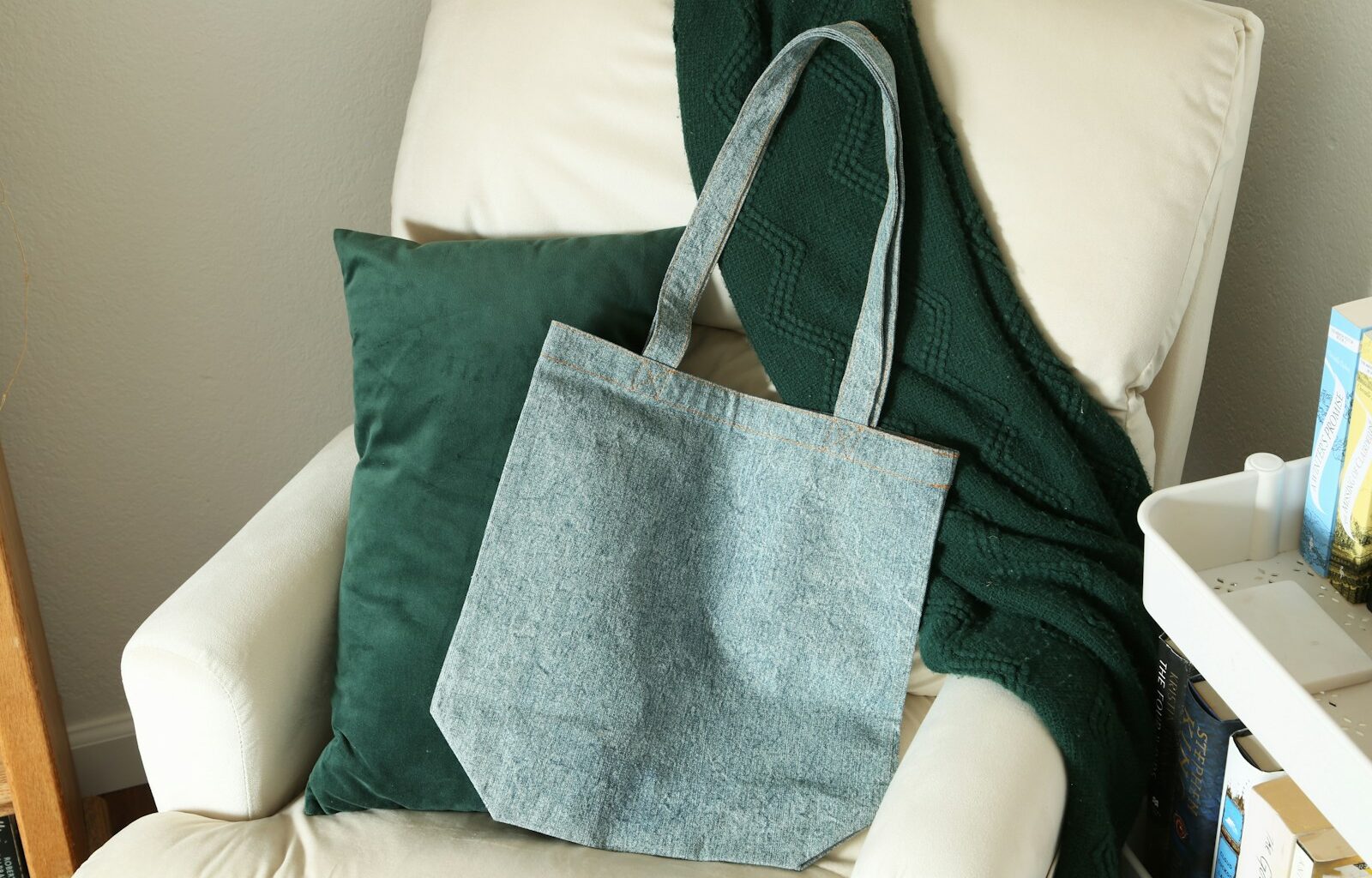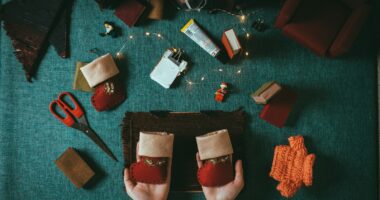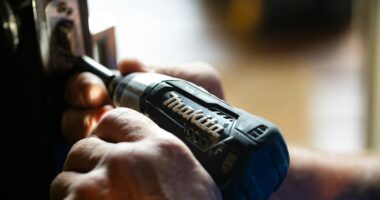Repurposing old curtains into fashionable bags saves money while reducing textile waste and creating unique accessories unavailable in stores. Textile industry research shows that upcycling fabric projects divert 95% of materials from landfills while creating items worth 60-80% more than original material costs, making curtain-to-bag transformation both environmentally beneficial and economically valuable.
1. Curtain Assessment and Material Evaluation
1.1 Fabric Quality and Durability Testing
Examine curtain fabric for wear patterns, sun damage, and structural integrity by checking seams, testing stretch, and assessing color fastness. Quality curtains often use durable fabrics perfect for bag construction while providing unique patterns and textures unavailable in standard bag materials.
1.2 Weight and Drape Characteristics
Heavy curtain fabrics create structured bags ideal for shopping or work use, while lightweight materials work better for casual totes or evening bags. Understanding fabric characteristics helps match curtain materials to appropriate bag styles and intended uses.
1.3 Pattern and Design Potential
Analyze existing curtain patterns, colors, and decorative elements for design inspiration—florals for vintage styles, geometric patterns for modern bags, or solid colors for classic designs. Existing design elements often suggest natural style directions for finished bags.
1.4 Hardware and Trim Utilization
Curtain tiebacks, grommets, decorative trim, and hardware can enhance bag designs while reducing material costs and adding unique details. Incorporating existing elements maintains design continuity while creating one-of-a-kind accessories.
2. Design Planning and Style Selection
2.1 Bag Style and Functionality Decisions
Choose bag styles based on fabric characteristics and intended use—tote bags for heavy fabrics, clutches for decorative materials, or messenger bags for structured curtains. Matching style to material ensures successful projects and functional results.
2.2 Size and Proportion Calculations
Plan bag dimensions based on available fabric and intended use while considering body proportions and carrying comfort. Standard measurements provide starting points—totes 14″x16″, clutches 10″x6″, shopping bags 16″x20″—but customization creates perfect fits.
2.3 Handle and Closure Options
Select handle styles based on fabric weight and personal preference—sewn straps for casual bags, purchased handles for professional looks, or drawstring closures for simple construction. Handle choice significantly affects bag functionality and appearance.
2.4 Pocket and Feature Integration
Plan internal or external pockets, zippers, or organizational features that enhance bag utility while showcasing sewing skills. Additional features increase bag value while providing opportunities to practice advanced construction techniques.
3. Pattern Creation and Cutting Preparation
3.1 Measurement and Template Development
Create accurate patterns using paper or cardboard templates that ensure consistent results and efficient fabric use. Proper patterns prevent cutting mistakes while enabling multiple bags from single curtain sets or future project replication.
2.2 Fabric Layout and Cutting Strategy
Plan fabric layout to maximize material use while considering pattern direction, seam placement, and design element positioning. Strategic cutting ensures attractive finished products while minimizing waste and optimizing available materials.
3.3 Seam Allowance and Construction Planning
Include appropriate seam allowances—typically 1/2″ to 5/8″—in all pattern pieces while planning construction sequence and finishing techniques. Proper planning prevents construction problems while ensuring professional-quality results.
3.4 Interfacing and Stabilization Considerations
Determine whether lightweight curtain fabrics need interfacing or stabilization to create structured bags with proper shape retention. Adding interfacing improves bag durability while creating professional appearance and functionality.
4. Basic Construction Techniques
4.1 Seaming and Joining Methods
Master basic seaming techniques including straight seams, French seams, and flat-fell seams that create strong, attractive bag construction. Quality seaming prevents wear and provides professional appearance that distinguishes handmade from amateur construction.
4.2 Handle Attachment and Reinforcement
Attach handles securely using appropriate techniques for fabric weight and style—box stitching for heavy loads, decorative stitching for lightweight bags. Proper reinforcement prevents handle failure while maintaining attractive appearance.
4.3 Lining Installation and Finishing
Install linings that protect bag contents while hiding construction details and adding durability. Quality lining installation demonstrates advanced sewing skills while significantly improving finished bag functionality and longevity.
4.4 Edge Finishing and Professional Details
Finish raw edges using serging, binding, or folding techniques that prevent fraying while creating clean, professional appearance. Attention to edge finishing distinguishes quality handmade bags from amateur projects.
5. Advanced Design Features and Embellishments
5.1 Zipper Installation and Closure Systems
Add zippers, snaps, or magnetic closures that enhance bag security and functionality while demonstrating advanced sewing skills. Quality closures improve bag utility while adding professional touches that increase perceived value.
5.2 Decorative Stitching and Embellishment
Incorporate decorative stitching, appliqué, or embroidery that personalizes bags while showcasing creative skills. Thoughtful embellishment transforms simple bags into unique accessories that reflect personal style and craftsmanship.
5.3 Hardware Integration and Professional Touches
Add purchased hardware like D-rings, buckles, or decorative elements that create professional appearance and enhanced functionality. Quality hardware elevates homemade bags to commercial-quality appearance and durability.
5.4 Color Coordination and Style Matching
Coordinate thread, lining, and hardware colors to create cohesive designs that look intentional and professionally planned. Color coordination demonstrates design awareness while creating attractive, marketable finished products.
6. Specialty Bag Types and Applications
6.1 Shopping and Market Bag Construction
Create sturdy shopping bags using heavy curtain fabrics with reinforced handles and generous capacity for practical use. Market bags require strong construction while providing opportunities to practice structural sewing techniques.
6.2 Evening and Formal Bag Styles
Transform decorative curtain fabrics into elegant clutches or evening bags using sophisticated construction techniques and quality hardware. Formal bags showcase advanced skills while creating accessories suitable for special occasions.
6.3 Travel and Utility Bag Projects
Design travel accessories like toiletry bags, shoe bags, or packing organizers that utilize curtain materials efficiently while providing practical travel solutions. Utility bags offer construction practice while creating genuinely useful items.
6.4 Gift and Presentation Applications
Create attractive gift bags, wine bags, or specialty containers that provide eco-friendly alternatives to disposable packaging. Gift applications demonstrate versatility while supporting sustainable lifestyle practices.
7. Quality Control and Finishing Excellence
7.1 Construction Quality Assessment
Inspect finished bags for construction quality, seam integrity, and functional performance before use or gifting. Quality assessment ensures satisfaction while identifying areas for improvement in future projects.
7.2 Care Instructions and Maintenance
Develop appropriate care instructions based on original curtain fabric requirements and construction methods. Proper care maintains bag appearance and extends useful life while protecting investment in time and materials.
7.3 Storage and Organization Solutions
Store finished bags properly to maintain shape and prevent damage while organizing multiple projects efficiently. Good storage practices preserve quality while enabling easy access and selection for different occasions.
7.4 Documentation and Project Records
Document successful patterns, techniques, and measurements for future reference and project replication. Good records enable continuous improvement while preserving successful approaches for repeated use.
Conclusion
Transforming old curtains into stylish bags combines environmental consciousness with creative expression while developing valuable sewing skills and creating unique accessories. The process requires basic sewing ability but offers opportunities to practice advanced techniques while creating functional, attractive items. Start with simple tote bag designs using quality curtain fabrics, then progress to more complex styles as skills and confidence develop. Success depends on careful planning, quality construction, and attention to finishing details that distinguish handmade excellence from amateur efforts. Your repurposed curtain bags will provide years of use while demonstrating creativity, sustainability, and the satisfaction of transforming discarded materials into beautiful, functional accessories.












